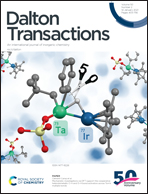Polymerization inspired synthesis of MnO@carbon nanowires with long cycling stability for lithium ion battery anodes: growth mechanism and electrochemical performance†
Abstract
Manganese-based transition metal oxides are regarded as one kind of high capacity and low cost anode material for Li-ion batteries. To overcome the challenges of poor electrical conductivity and large volumetric expansion during the charging–discharging process of MnO, we here synthesize MnO@carbon (MnO@C) nanowires via the polymerization inspired in situ growth of [Mn–NTA] (NTA = nitrilotriacetic acid) precursor nanowires with a subsequent heat treatment process. The growth mechanism of [Mn–NTA] precursor nanowires was studied. The morphology of the precursor nanowires depended largely on the molar ratio of MnCl2 to NTA reactants. At a molar ratio of 2, the length of the [Mn–NTA] nanowires reached up to more than 140 μm. Furthermore, the as-synthesized MnO@C nanowires were integrated with a very low content of reduced graphene oxide (rGO) to prepare a self-standing paper-like MnO@C/rGO anode for lithium ion batteries without a binder. The MnO@C/rGO anode showed a unique structure with one-dimensional porous MnO nanowires hierarchically encapsulated by a conductive carbon framework. As a result, the self-standing electrode achieved a high capacity of 1368 mA h g−1 after 100 cycles at a current density of 100 mA g−1 and prominent cycling stability with a capacity of 689.9 mA h g−1 even after 1700 cycles at 2000 mA g−1.



 Please wait while we load your content...
Please wait while we load your content...